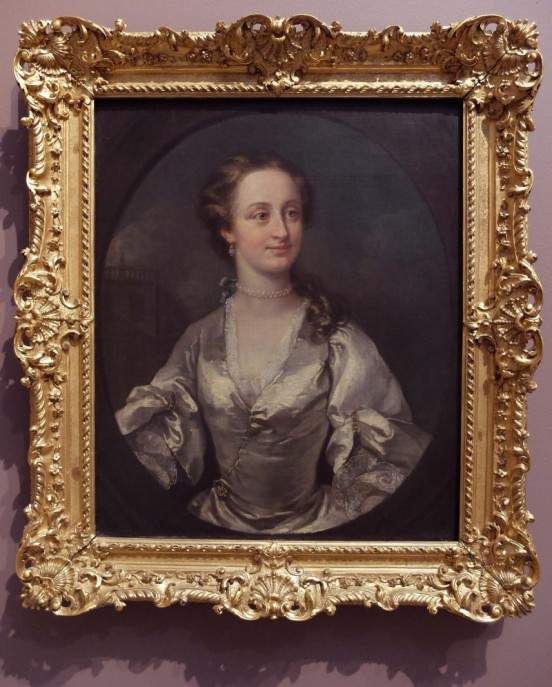For the first time in Bologna a painting by the great William Hogarth. It arrives from Belgium
As part of the exhibition Unexpected Guests, the Musei Civici d’Arte Antica of Bologna, in collaboration with the Museum voor Schone Kunsten - Museum of Fine Arts of Ghent (Belgium), are exhibiting a painting, Portrait of a Lady in a White Dress and Pearl Earrings by William Hogarth (London, 1697 - 1764), at the Davia Bargellini Museum from February 10 to April 28, 2019. For the first time ever, Bologna is hosting a work by the celebrated English artist.
Known and admired for his painting of narrative realism, subtly descriptive and sharp, moralizing and satirical content, William Hogarth rose to prominence as a painter of the English Court only in the last years of his life. Translated into print in copious print runs, his paintings criticized political events, described and denounced social habits and vices of English society of the time. Until about the middle of the 19th century, a kind of Hogarthomania marked the great success enjoyed by the painter’s work, which was in many ways revolutionary. A renowned portraitist, Hogarth initially devoted himself to a predominantly aristocratic audience, but from about 1740 he extended his interest to a clientele belonging to the emerging wealthy commercial bourgeoisie, for whom he forged a new lexicon of English portraiture of the time.
In the canvas presented here, made around 1740, Hogarth depicts the woman in an architectural landscape characterized by an elegant classical balustrade. The pose and the physiognomic rendering, more intimate and natural than the apparatus portraits of the aristocracy of the time, allude to the simple yet affluent condition of the young bourgeois lady, clad in a luxurious white silk dress with silvery highlights. In execution, the delicate and spontaneous touch, rich in subject matter, is characteristic of her production.
Rather rare, William Hogarth’s portraits are now mostly collected in British or American museums; only one portrait is in the Louvre Museum and one in theAlte Pinakothek in Munich. Few other European museums possess his portraits, and among them is the Museum of Fine Arts in Ghent, where the Portrait of a Lady arrived in 1911 as a gift from theFriends of the Museum, the powerful philanthropic association that determined the quality and variety of the Flemish city’s art collections. An independent body, the Association was created in 1897, a century after the founding of the Museum; its main purpose was precisely to enrich the city’s collections with works by artists who had been missing for at least fifty years. Not only engaged in the acquisition of works on the international market, towards the end of the 19th century, the Friends were also involved in the creation of an extraordinary new home to house the municipal collections. The result of their generous efforts is the Museum’s current home, built in Citadel Park, just outside Ghent’s old city center. Designer of the building was Charles Van Rysselberghe (Hoogstraten, 1850 - Nice, 1920), a distinguished architect. The architect completed the museum in two phases, in 1902 and 1913, for theUniversal Exhibition.
In those years, on the heels of World War I, the Friends of the Museum managed to collect an impressive array of artworks including both sacred and mythological paintings, portraits, or interior scenes and still lifes. Following the collecting fashions of the time, the Friends focused on acquiring works executed from the 15th to the 18th century, from the Renaissance to the Neoclassical period. In one of those successful buying campaigns they managed to secure William Hogarth’s beautiful and rare Portrait of a Lady. A keen taste for 19th-century French painting secured the Friends exceptional acquisitions, such as Théodor Géricault’s Portrait of a Kleptomaniac.
For all information you can call 051 236708 or visit www.museibologna.it/arteantica.
 |
| For the first time in Bologna a painting by the great William Hogarth. It arrives from Belgium |
Warning: the translation into English of the original Italian article was created using automatic tools. We undertake to review all articles, but we do not guarantee the total absence of inaccuracies in the translation due to the program. You can find the original by clicking on the ITA button. If you find any mistake,please contact us.





























